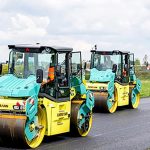In manufacturing, prioritising health and safety is a legal requirement and a fundamental necessity to ensure the safety and well-being of workers. Health and safety are crucial in every industry, especially in manufacturing, where workers operate heavy machinery that could put their safety at risk. Employers are responsible for preventing accidents in the workplace, fostering a secure working environment, and minimising occupational hazards.
As technology evolves, manufacturing companies must have a robust health and safety framework to safeguard the workforce and enhance operational efficiency while ensuring compliance with stringent regulations.
In this article, let’s find out some of the latest trends in health & safety in the manufacturing industry.
1. Data Collection and Analysis
Data collection and analysis can significantly enhance safety in the manufacturing industry in many ways. One is leveraging technologies like IoT-enabled devices, sensors, and advanced analytics. In doing so, manufacturers can gain valuable insights into the manufacturing processes, determine potential risks, and implement safety measures.
Data collection using sensors and monitoring devices allows real-time tracking of parameters, from machine status to pressure and temperature. It also identifies abnormal conditions to enable prompt intervention to prevent equipment failures and accidents that can jeopardise safety and affect productivity.
Data analysis is also helpful for predictive maintenance in a manufacturing setting. Through data analysis, manufacturers can predict failures by monitoring the performance of machines and identifying patterns that precede malfunctions. Predictive maintenance is the best way to prevent sudden breakdowns, which could lead to accidents due to faulty equipment.
Another way data collection and analysis can improve safety in manufacturing is through occupational safety monitoring. Wearable devices and sensors can monitor workers’ health and safety in real time. For instance, they can identify signs of fatigue, high levels of stress, and possible exposure to harmful substances. Data analysis from occupational safety monitoring allows manufacturers to implement safety measures to lower the risk of workplace injuries.
2. Automation and Robotics
One of the best ways manufacturing companies can improve safety is by investing in automation and robotics to minimise the need for humans to work in dangerous situations. By minimising human exposure to hazardous conditions, manufacturers can reduce the risk of accidents and improve overall workplace safety.
With automation, machines can perform tasks that involve exposure to extreme temperatures, hazardous materials, and environments with high noise levels. By automating these tasks, manufacturers can reduce the risk to workers. Meanwhile, robotics can handle heavy loads and carry out repetitive tasks without the risk of fatigue or musculoskeletal injuries to human workers, reducing injuries resulting from repetitive motion and lifting.
Automated guided vehicles are robotic systems used for material handling and logistics in manufacturing facilities. With the help of these vehicles, workers no longer need to manually handle heavy materials that could put them at risk of back injuries and other physical strain.
Another way robots can improve safety in manufacturing is by performing welding and cutting operations on behalf of humans. Robots can perform these tasks with speed and precision, eliminating the need for humans to work with dangerous welding arcs and cutting tools.
3. Comprehensive Health Surveillance Plans
A comprehensive health surveillance plan is essential in manufacturing to monitor and safeguard the workers’ health and well-being. The plan requires a systematic and ongoing assessment of the workplace condition, workers’ health status, and exposure risks.
Before you get started, familiarise the local and national occupational health and safety regulations when developing a comprehensive health surveillance plan, which is likely to include some form of off the shelf health and safety training. That way, you can establish a plan that aligns with these regulations to ensure compliance.
A thorough risk assessment is essential for developing a comprehensive health surveillance plan. During the assessment, identify potential health hazards and consider noise levels, chemical exposure, physical hazards, ergonomic risks, etc.
From the risk assessment conducted, identify specific health surveillance needs for workers exposed to hazards. For instance, workers handling toxic chemicals require different health monitoring than those exposed to other vibrations or noise.
The plan must also include medical examination protocols for workers. Establish protocols for pre-employment and annual medical examinations tailored to the employee’s unique needs. Identify the frequency and types of medical examinations according to their nature of work and potential health risks.
4. Data Privacy Laws and Regulations
Data privacy laws and regulations are some of the most essential considerations to health & safety in the manufacturing industry since the industry increasingly relies on data analytics, digital technologies, and interconnected systems. Manufacturing companies know and comply with relevant data privacy laws to protect sensitive information and establish stakeholders’ trust.
Manufacturing companies should know the General Data Protection Regulation or GDPR. It refers to a comprehensive data protection regulation about personal data. The law imposes strict requirements on organisations’ handling, processing, and securing personal data.
For manufacturing companies based out of the UK, the Data Protection Act 2018 will apply. Such a law supplements the UK’s GDPR, outlining additional requirements and provisions. It addresses the processing of personal and the rights of the users.
5. Integration of IoT and Wearable Devices
IoT and wearable devices have been transforming how manufacturing companies operate, monitor, and optimise their processes. Such an integration brings various benefits, including real-time monitoring, increased efficiency, improved worker safety, and predictive maintenance.
There are many ways manufacturing companies can integrate IoT into their daily operations. One is to install sensors on equipment and machinery to collect real-time data on various parameters like vibration, pressure, temperature, and energy consumption. Another is equipping tools and machinery with IoT-enabled devices, allowing for communication and data exchange in a network.
Manufacturing companies are investing in wearables like smart helmets or glasses, wearable sensors, and RFID tags. Equipping workers with smart helmets or glasses that provide augmented reality overlays gives them real-time access to information and data relevant to their specific tasks.
Wearable sensors are also among the latest trends in manufacturing, where companies integrate the sensors into the worker’s protective equipment (PPE) or clothing to detect fatigue, monitor vital signs, and track their location in the facility. All these are crucial to workers’ health and safety.







